192 results
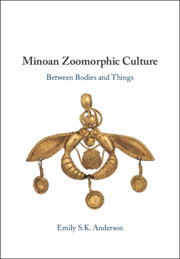
Minoan Zoomorphic Culture
- Between Bodies and Things
-
- Published online:
- 17 May 2024
- Print publication:
- 06 June 2024
21 - The Material Culture of the History of Sexuality
-
-
- Book:
- The Cambridge World History of Sexualities
- Published online:
- 26 April 2024
- Print publication:
- 16 May 2024, pp 467-492
-
- Chapter
- Export citation
Chapter 38 - Material Culture
- from Part VI - Social and Intellectual Topics
-
-
- Book:
- Jonathan Swift in Context
- Published online:
- 02 May 2024
- Print publication:
- 09 May 2024, pp 303-310
-
- Chapter
- Export citation
6 - Materials, Environment, and the Application of Knowledge
-
- Book:
- Creolised Science
- Published online:
- 03 April 2024
- Print publication:
- 04 April 2024, pp 183-211
-
- Chapter
- Export citation
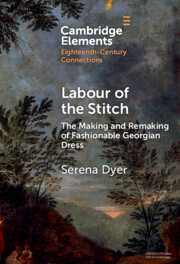
Labour of the Stitch
- The Making and Remaking of Fashionable Georgian Dress
-
- Published online:
- 27 March 2024
- Print publication:
- 18 April 2024
-
- Element
- Export citation
The Southwest Silk Road: artistic exchange and transmission in early China
-
- Journal:
- Bulletin of the School of Oriental and African Studies , First View
- Published online by Cambridge University Press:
- 07 March 2024, pp. 1-26
-
- Article
-
- You have access
- Open access
- HTML
- Export citation
6 - Landscape and Material Culture
- from Part I - Contexts
-
-
- Book:
- The Cambridge History of Old Norse-Icelandic Literature
- Published online:
- 08 February 2024
- Print publication:
- 29 February 2024, pp 111-132
-
- Chapter
- Export citation
3 - Perspectivism, Materials and Objects
-
- Book:
- Perspectivism in Archaeology
- Published online:
- 01 February 2024
- Print publication:
- 08 February 2024, pp 62-86
-
- Chapter
- Export citation
6 - Inhabiting a Perspectivist World
-
- Book:
- Perspectivism in Archaeology
- Published online:
- 01 February 2024
- Print publication:
- 08 February 2024, pp 150-179
-
- Chapter
- Export citation
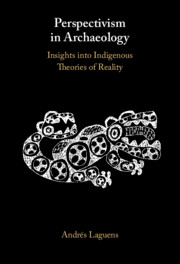
Perspectivism in Archaeology
- Insights into Indigenous Theories of Reality
-
- Published online:
- 01 February 2024
- Print publication:
- 08 February 2024
4 - An Imaginary with Images: Reconsidering the Funeral Oration and Material Culture
- from Part I - Contexts
-
-
- Book:
- The Athenian Funeral Oration
- Published online:
- 11 January 2024
- Print publication:
- 01 February 2024, pp 89-112
-
- Chapter
- Export citation
5 - The Reach of Reading Material
-
- Book:
- A Colonial Book Market
- Published online:
- 16 November 2023
- Print publication:
- 30 November 2023, pp 225-275
-
- Chapter
- Export citation
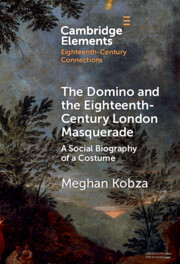
The Domino and the Eighteenth-Century London Masquerade
- A Social Biography of a Costume
-
- Published online:
- 29 November 2023
- Print publication:
- 15 February 2024
-
- Element
- Export citation
The Foods of Love? Food Gifts, Courtship and Emotions in Long Eighteenth-Century England
-
- Journal:
- Transactions of the Royal Historical Society , First View
- Published online by Cambridge University Press:
- 20 November 2023, pp. 1-24
-
- Article
-
- You have access
- Open access
- HTML
- Export citation
17 - Zauberflöte: A Cultural Phenomenon in an Age of Revolution
- from Part IV - Reception, Interpretation, and Influence
-
-
- Book:
- The Cambridge Companion to <i>The Magic Flute</i>
- Published online:
- 24 November 2023
- Print publication:
- 02 November 2023, pp 275-290
-
- Chapter
- Export citation
3 - Adopting the Missionary
-
- Book:
- The Mizo Discovery of the British Raj
- Published online:
- 12 October 2023
- Print publication:
- 02 November 2023, pp 104-146
-
- Chapter
- Export citation
1 - Introduction
-
- Book:
- Rome in the Ninth Century
- Published online:
- 10 October 2023
- Print publication:
- 12 October 2023, pp 1-9
-
- Chapter
- Export citation
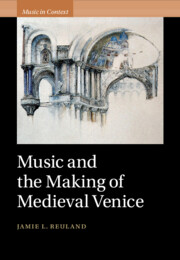
Music and the Making of Medieval Venice
-
- Published online:
- 12 October 2023
- Print publication:
- 26 October 2023
1 - Archival Traps
-
- Book:
- Mooring the Global Archive
- Published online:
- 19 October 2023
- Print publication:
- 05 October 2023, pp 1-38
-
- Chapter
-
- You have access
- Open access
- HTML
- Export citation
6 - The Burned Archive
-
- Book:
- Mooring the Global Archive
- Published online:
- 19 October 2023
- Print publication:
- 05 October 2023, pp 224-266
-
- Chapter
-
- You have access
- Open access
- HTML
- Export citation



